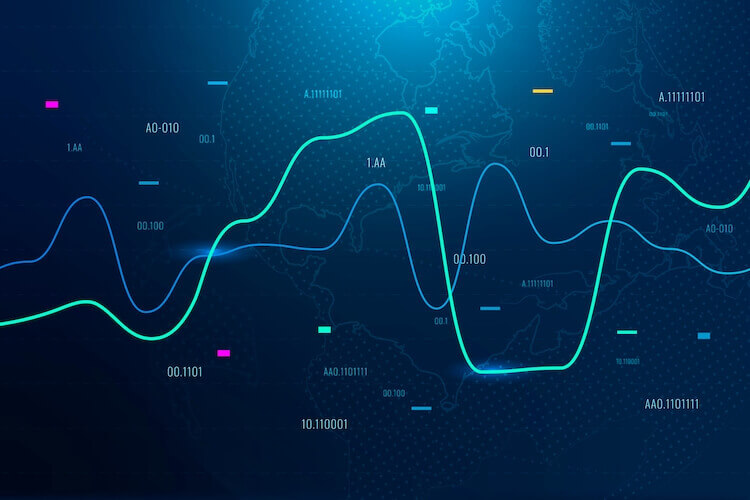
Limit Order, Market Order and Stop Orders - What Are They?
Table of Contents
At Orcabay, we excel at offering top-tier market making services, liquidity solutions and customized liquidity solutions. Leveraging our extensive experience and crypto market making strategy we ensure liquidity and efficient trading in the cryptocurrency space.

Jakob Brezigar
Jakob, an experienced specialist in the field of cryptocurrency market making, boasts an extensive international presence. With Orcabay, he has skillfully managed major operations and deals for a wide array of global stakeholders.
What is a market order and when is it used?
A market order is an instruction to buy or sell a security immediately at the current market price. It’s used when certainty of execution is prioritized over price.
How does a limit order differ from a market order?
A limit order specifies a price limit at which the order must be executed. Unlike market orders, it provides price control but lacks the immediate execution and certainty.
What triggers a stop order to become active?
A stop order becomes active once the market price reaches a specified stop price. It then acts as a market order, seeking immediate execution, but not guaranteeing a price.
In the realm of the stock market, every trader and investor has a myriad of tools and strategies at their disposal to maximize returns. Of these, understanding order types is paramount. The three prevalent order types – market, limit, and stop orders – are the backbone of trading. By delving into the nuances of each, individuals can make more informed decisions, marrying their personal finance goals with the fluctuating world of stock values.
What Is a Market Order and How Do I Use It?
A market order is a directive to buy or sell a security immediately at the current market price. In fast-moving markets, the time you decide to enter or exit a position can be critical.
By placing a market order, you’re essentially communicating that you prioritize execution speed. While the order will be executed immediately, there’s no guarantee of a specific price. This might mean buying or selling at a value slightly different from the current price you see, especially in volatile markets.
For instance, if the prevailing market price of a stock is $100 and there’s breaking news about the company, by the time your market order reaches the system, the price might have changed.
It’s essentially a list that captures all buy and sell orders for a given asset. When trading crypto assets on a centralized exchange, one can visualize the demand and supply and identify where arbitrage opportunities might lie.

What Is a Limit Order and How Does It Work?
In the world of trading, a limit order is like setting a target. It allows you to buy shares or sell securities at a specified price. Suppose a stock is currently priced at $60. If you believe that it’s more valuable to purchase shares at $55, you can place a buy limit order. Conversely, if you feel that selling at $65 will garner profit, a sell limit order can be placed.
The essence of limit orders is giving traders greater control over their desired execution price. An example to illustrate: if stock A is trading at $10, and you place a limit order to buy it at $9, this order will only be filled if the stock falls to $9 or a better. It ensures you don’t pay more (or sell for less) than you intended.

Limit Order vs Market Order
Limit orders and market orders serve different needs. A market order offers speed – it gets executed immediately at the prevailing market price. In contrast, a limit order gives you more control. When placing a limit order, you specify the maximum price you’re willing to pay when buying or the minimum price you’re willing to accept when selling.
Let’s say a stock trades at $50; if you set a limit order to buy at $45, the trade will be executed only when the stock dips to that specific price or better. However, if the stock’s price never drops to $45 or better during the trading day, your limit order won’t execute.
The distinction between limit and market orders is about control versus speed. Limit orders provide more control over the price at which you buy or sell. If the stock doesn’t hit your limit price or better, the trade won’t happen. Market orders, however, guarantee execution but leave the final trade price up to wherever the market is at that moment.
Good-'til-canceled limit order
Now, imagine you place a limit order, but the stock price doesn’t hit your desired point on the same trading day. A good-’til-canceled (GTC) condition can be your ally. A GTC limit order remains active until either the order is executed, or you manually cancel it.
Some brokerages may have an expiration date for GTC orders, like 90 days, after which, if the limit price hasn’t been met, the order is automatically canceled.

- Pros: Limit orders offer greater control over execution price, ensuring you buy or sell at a price you’re comfortable with. They also provide flexibility to tailor strategies around market expectations and protect against buying or selling impulsively in volatile markets. For instance, if you expect firm news that might affect a stock’s value, using limit orders can be strategic.
- Cons: There’s always the chance a limit order might never execute if the specified price isn’t reached. This can be especially true in fast-moving markets. Additionally, because of their nature, limit orders might incur higher trading costs in some brokerages.

Let’s recap. Limit orders set a specific price for buying or selling. Market orders aim for immediate execution, disregarding specific price guarantees. Stop orders, on the other hand, remain dormant until a certain price is hit, at which point they become market orders. Understanding the distinction can profoundly impact your trading strategy.

While both types are tools for more control, they differ in execution. Limit orders execute at the desired price or better, while stop orders wait to hit a set stop price before turning into market orders to buy or sell. For example, if a stock’s price is plummeting and you set a stop order to sell once it hits $40, once this stop price is reached, it becomes a market order.
Price gaps are like pauses in a conversation. In trading terms, they refer to noticeable price jumps with no trading activity between the previous and subsequent price. Often a result of overnight company news, earnings reports, or global events, they can make a stock open significantly higher or lower than its previous close. For traders relying on stop or limit prices, gaps can greatly affect trading strategies.

A stop order, sometimes referred to as a stop-loss order, is a directive to buy or sell a stock once it reaches a specific stop price. When this price is achieved, the stop order becomes a market order, aiming for immediate execution, irrespective of what the current market price might be.
This tool is particularly useful in mitigating potential losses or securing profits. For instance, if you purchased a stock at $20 and its current price is $30, but you fear it might drop, a stop order can be set at $28 to protect some of your gains.
A critical aspect to consider with stop orders is the possibility of price gaps. If a stock experiences a significant overnight shift, surpassing your set stop price, the order is executed at the next available price, which could be quite different from your set stop price. It contrasts with how a limit order functions. In the realm of limit orders, you’re essentially setting a boundary for the stock price.
For instance, if you have a limit order to sell a security when the stock price reaches $50, it will only sell at that specified limit price or better. However, with a buy limit order, the intention is to purchase the security only when its value dips to your set limit price or lower. This makes the limit order a strategic tool for traders looking to buy or sell at precise market points, unlike stop orders which react to rapid changes.
When considering whether to use a limit order or a stop order, it’s essential to factor in how much precision you desire in terms of the stock price when you buy or sell.

Similarly, for those using limit orders, price gaps can be a double-edged sword. While they can safeguard against unfavorable prices, if a stock never touches your set limit due to a substantial price gap, the trade might never execute.
A sell limit order sets the benchmark for the minimum price at which you’re willing to sell a stock. When or if the stock reaches this given price or higher, the sell order triggers. This can be especially valuable when aiming to sell shares at a profit, especially during unpredictable trading hours. One primary advantage of using a limit order in such scenarios is the ability to exert a measure of control over the selling process.
For instance, if you set a limit order to sell a stock when the stock reaches a target value during the trading day, it ensures you’re not offloading it at a rate lower than your desired threshold. Conversely, a buy stop order is implemented to purchase stocks once they achieve a specified rate above the current level. While a stop limit order works to sell stocks when they touch or surpass a set value, it also has a stop limit set, ensuring the stock is not sold below a certain price.
The idea behind these orders is to help traders and investors to capitalize on favorable market conditions and to shield themselves from unfavorable shifts. When the trading day is marked by volatility, having tools like the sell limit order or stop limit order can be crucial for achieving a higher price and optimizing returns.

When you set a limit price, it’s your boundary, your line in the sand. For a buy limit order, this price indicates the maximum you’re willing to pay. For a sell limit order, it’s the minimum at which you’re prepared to sell. This ensures that you execute trades at prices that align with your financial strategies and forecasts of future results, rather than being swayed by current market emotions or speculations.
In the vast landscape of stock trading, having a solid grasp on order types can be instrumental. By discerning when to use market, limit, or stop orders, traders can refine their strategies, exercising more control over their trades and potentially safeguarding against unnecessary losses.
As always, past performance doesn’t guarantee future results, so it’s essential to stay updated with current stock market trends, company news, and to continue refining trading skills. Delving deeper into the mechanics of how limit orders work reveals that they provide traders an opportunity to buy or sell a security at a specific price.
For instance, if the current bid for a particular stock is below your desired selling point, setting a limit order ensures that you only sell shares once the share price meets or surpasses your specified threshold.
Similarly, a buy order gives you the capacity to purchase shares only when the share price matches or falls beneath your designated rate. In addition, traders should be aware of the sell stop order, which triggers a sale once the stock drops to a certain level, ensuring that losses can be capped. Recognizing these intricacies and nuances of trading provides an edge in the dynamic world of stock exchanges.



